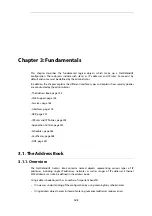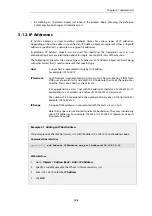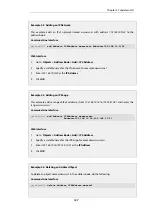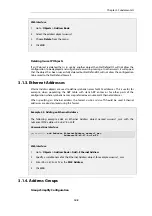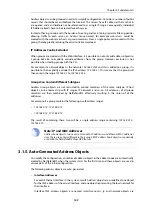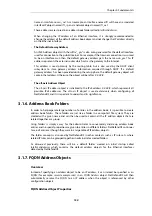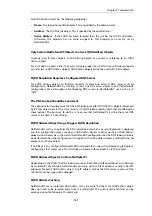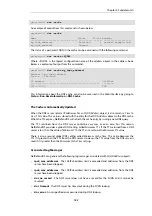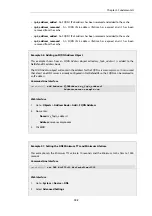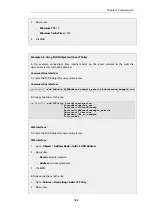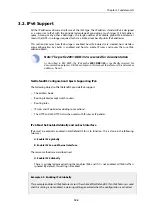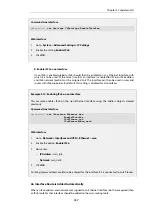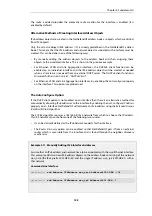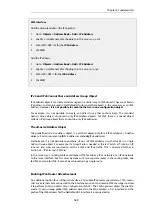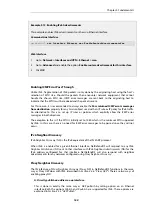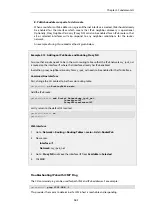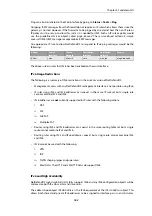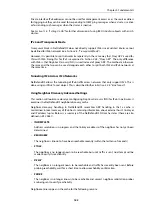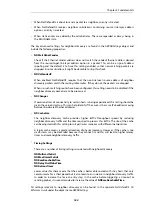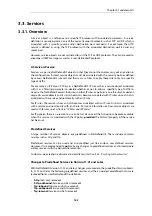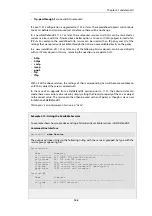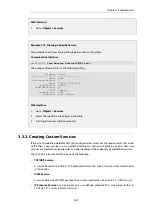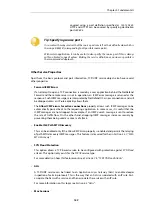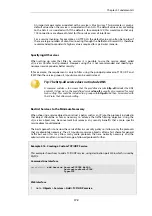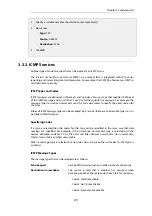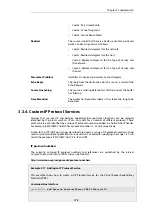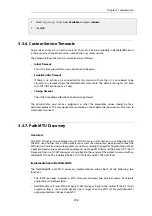
Web Interface
Add the network address (the IPv6 prefix):
1.
Go to: Objects > Address Book > Add > IP6 Address
2.
Specify a suitable name for the object, in this case:
wan_net6
3.
Enter
2001:DB8::/32
for the IP6 Address
4.
Click OK
Add the IP address:
1.
Go to: Objects > Address Book > Add > IP6 Address
2.
Specify a suitable name for the object, in this case:
wan_ip6
3.
Enter
2001:DB8::1
for the IP6 Address
4.
Click OK
IPv4 and IPv6 Cannot Share an Address Group Object
IPv6 address objects are created and managed in a similar way to IPv4 objects They are called an
IP6 Address
and can be used in NetDefendOS rules and other objects in the same way as an IPv4
address. However, it is not possible to combine the two in one configuration object.
For example, it is not possible to create an
Address Group
that contains both. The standard
Address Group
object can contain only IPv4 address objects. For IPv6 there is a special object
called an
IP6 Group
object that can contain only IPv6 addresses.
The all-nets6 Address Object
The predefined
all-nets
address object is a catch-all object only for all IPv4 addresses. Another
object,
all-nets6
, represents all IPv6 addresses and only IPv6 addresses.
Furthermore, it is not possible to combine
all-nets
(all IPv4 addresses) with
all-nets6
in a single
Address Group
object. For example, if a
DropAll
rule is needed as the last "catch-all" rule in an IP
rule set, two rules are required to catch all IPv4 and IPv6 traffic. This is discussed further in
Section 3.6, “IP Rules and IP Policies”
In the same way, a routing table could route traffic for either a IPv4 network or an IPv6 network
to the same interface but this must be done with two separate routes in the routing table, one
for IPv4 and one for IPv6. It cannot be achieved using a single route.
Enabling IPv6 Router Advertisement
An additional option for an Ethernet interface is to enable IPv6
router advertisement
. This means
that any external client connected to the interface can solicit and receive IPv6 messages to allow
it to perform
Stateless Address Auto-Configuration
(SLAAC). The SLAAC process allows the client to
create its own unique global IPv6 address based on the MAC address of its interface and the
prefix of the IPv6 address for the NetDefendOS interface it is connected to.
Chapter 3: Fundamentals
159
Summary of Contents for NetDefendOS
Page 30: ...Figure 1 3 Packet Flow Schematic Part III Chapter 1 NetDefendOS Overview 30 ...
Page 32: ...Chapter 1 NetDefendOS Overview 32 ...
Page 144: ...Chapter 2 Management and Maintenance 144 ...
Page 284: ...Chapter 3 Fundamentals 284 ...
Page 392: ...Chapter 4 Routing 392 ...
Page 419: ... Host 2001 DB8 1 MAC 00 90 12 13 14 15 5 Click OK Chapter 5 DHCP Services 419 ...
Page 420: ...Chapter 5 DHCP Services 420 ...
Page 573: ...Chapter 6 Security Mechanisms 573 ...
Page 607: ...Chapter 7 Address Translation 607 ...
Page 666: ...Chapter 8 User Authentication 666 ...
Page 775: ...Chapter 9 VPN 775 ...
Page 819: ...Chapter 10 Traffic Management 819 ...
Page 842: ...Chapter 11 High Availability 842 ...
Page 866: ...Default Enabled Chapter 13 Advanced Settings 866 ...
Page 879: ...Chapter 13 Advanced Settings 879 ...

